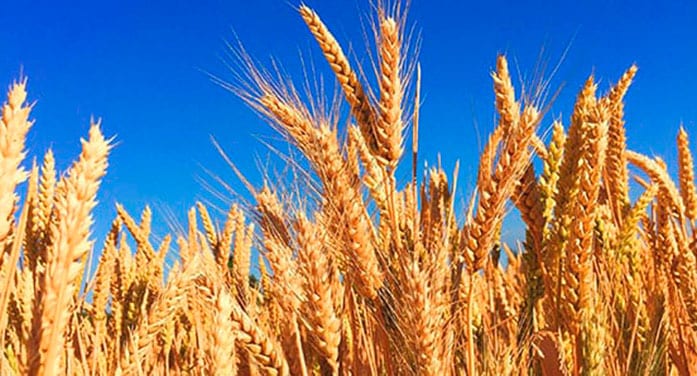 For American academic Scott Reynolds Nelson, the timing was fortuitous. His Oceans of Grain came to market coincident with Russia’s invasion of Ukraine. And as Nelson’s thesis revolves around the critical role wheat has played in history, the invasion’s implications for supply disruption add to the book’s topicality.
For American academic Scott Reynolds Nelson, the timing was fortuitous. His Oceans of Grain came to market coincident with Russia’s invasion of Ukraine. And as Nelson’s thesis revolves around the critical role wheat has played in history, the invasion’s implications for supply disruption add to the book’s topicality.
For sure, Nelson may egg the pudding. There’s also the enthusiast’s tendency to look at history from a monocausal perspective. Still, wheat has an obvious significance to the food supply and Nelson provides lots of interesting detail.
Baked bread, he tells us, is at least 14,400 years old. From a chronological perspective, “That makes bread older than writing, older than cities, older than most domesticated animals.”
Ukraine is front and centre in Nelson’s narrative.

Seeing the region’s potential, 18th-century Russian Empress Catherine the Great forcibly swept much of what is now Ukraine into the Russian Empire. It gave her what Nelson speculates may be the richest soil in the world – he calls it “a dark, beautifully aerated loam.” And combined with south Russia’s grain-growing resources, the building blocks for an exporting superpower were at hand.
But an abundance of wheat wasn’t enough. A suitable port was required to bring it to market. So Odessa was developed as the critical outlet on the Black Sea and the Russian Empire became Europe’s primary supplier of wheat.
There was, however, a competitor waiting in the wings. Around the mid-19th century, American wheat arrived on the European scene with a vengeance.
Nelson identifies several contributory factors.
Nitroglycerine, patented as dynamite, “could rip holes in the world’s mountains and blast passages in rock, allowing the construction of railway tunnels through mountains and turning inland river towns into ocean ports.” Suddenly, the movement of goods over long distances was vastly more feasible. Rail provided the means of economical land transport and the creation of deepwater ports meant that both ends of the ocean leg could accommodate large vessels.
| RELATED CONTENT |
| New strains of wheat sought with built-in resistance to wheat midge By Adrianna MacPherson |
| $2M boost for the development of new varieties of wheat By Bev Betkowski |
| How gene editing helps farmers and consumers By Sylvain Charlebois |
| More in Books |
Consequently, wheat could move by rail from the American midwest to the Atlantic seaboard and then be shipped across the ocean to somewhere like Antwerp’s deepwater port. Taken together with two other developments – the laying of the transatlantic underwater telegraph and the Chicago Board of Trade’s refinement of futures contracts – the stage was set for major upheaval.
Nelson describes a situation where a grain trader “could use the telegraph to order a hundred thousand bushels on the Chicago Exchange and – on the same day – sell it for future delivery in London or Liverpool. Buying and selling on the same day effectively eliminated the risk of a change in prices. … By the early 1870s, farming along the midwestern railways could operate in a financial loop, with scores of unknown lenders in European cities buying grain futures to pay thousands of unknown farmers to grow the grain.”
The confluence of these changes upended European market arrangements. Russia and Odessa no longer ruled.
By 1869, transporting wheat from Odessa to a European port was 25 per cent more expensive than shipping the same quantity from the American eastern seaboard. Although the American grain had to travel a considerably longer distance, it made the journey more efficiently.
Unsurprisingly, the volume of American exports soared. To get a sense of the scope of change, Nelson turns to contemporary sources using 1867 and 1873 as comparators. Over the short course of that period, the American share of Britain’s imported grain jumped from 14 per cent to 44 per cent. Meanwhile, the Russian share fell from 44 per cent to 21 per cent. In colloquial terms, the Americans ate the Russians’ lunch.
This, of course, was hugely disruptive for existing European producers. But it had a decided upside for European workers.
Thanks to cheap American wheat, food was less expensive and more abundant than hitherto. Nelson puts it this way: “For workers in Britain and industrial Europe, the period from approximately 1860 to 1890 really was a golden age.”
Wheat remains one of the world’s staple crops, with both Ukraine and Russia being critical exporters. And some countries are more vulnerable than others when it comes to supply disruptions. For instance, it’s estimated that around 35 per cent of Egypt’s calories come from wheat, about 70 per cent of which is imported from Russia and Ukraine.
As ever, war in the breadbasket is deeply problematic.
Troy Media columnist Pat Murphy casts a history buff’s eye at the goings-on in our world. Never cynical – well, perhaps a little bit. For interview requests, click here.
The opinions expressed by our columnists and contributors are theirs alone and do not inherently or expressly reflect the views of our publication.
© Troy Media
Troy Media is an editorial content provider to media outlets and its own hosted community news outlets across Canada.

